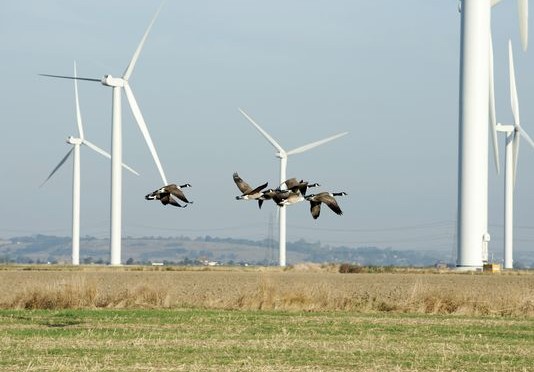Scientists overwhelmingly agree that climate change poses the largest threat to many of the planet’s wildlife populations, and since wind power is the biggest, fastest, cheapest way to cut harmful carbon pollution, it remains one of the most effective ways to protect them.
That includes bats.
While there are many significant human-caused threats to bats, ranging from cave roost disturbance and destruction, to habitat loss through deforestation, to bioaccumulation of harmful contaminants associated with fossil fuel production and other industrial activities, the wind industry has been at the forefront in taking proactive steps to protect these important animals and works extremely hard to reduce its effects on bats.
Over the past nearly thirteen years, the U.S. wind industry worked with public and private stakeholders to better understand our impacts, sought solutions to reduce those impacts, substantially funded research and tested new technology to further reduce wind energy’s footprint.
With the forgoing in mind, while it is true that high level of bats are impacted at some wind energy facilities, this is not the case at large percentages of the wind farms across the country, with most sites having low bat mortality rates.
For example, soon after discovering higher than anticipated bat fatalities at several mountain top wind facilities in the Mid-Atlantic region the wind industry helped to found the Bats and Wind Energy Cooperative, whose mission is to understand the impacts of wind on bats and find solutions to reduce those impacts. The wind industry has also partnered with researchers and the Department of Energy
Further, in 2015, voluntary best practices designed to reduce impacts on non-regulated bat species were adopted by the wind industry. Experts predict reducing turbine rotations in low-wind speed conditions during the fall migration period could reduce bat impacts up to 30 percent. “It’s a big deal. That’s a big move on their part,” said U.S. Geological Survey bat biologist Paul Cryan in response to the announcement of AWEA adopting this measure. “It’s really encouraging to hear the industry is taking steps to curtail turbines, which is the best way we know of to reduce bat fatalities.”
The U.S. wind industry has long operated under a legacy of care, in part due to the level of pre-construction evaluation undertaken in site selection (unique to the wind industry), designed to limit impacts on wildlife and their habitats, and post-construction monitoring undertaken to evaluate if issues exist, which should be addressed through operational adjustments. While all energy generation sources have impacts, some of which are acute and affect both human health and the environment, studies have shown wind energy to have the lowest impact on wildlife and their habitats of any source of energy.
By way of example, in a 2009 study by the New York State Energy Research and Development Authority (NYSERDA), analyzed the lifecycle impacts of the six major forms of energy generation. It found that “non-renewable electricity generation sources, such as coal and oil, pose higher risks to wildlife than renewable electricity generation sources, such as hydro and wind.”
American wind power is also helping to combat one of the biggest threats to bats: white nose syndrome. Since the emergence of this fungal disease in 2008, the wind industry has helped fund research to combat the disease, which has decimated bat populations throughout the Northeast and Midwest.
And despite some misreporting in the media, studies show that changes in air pressure around rotating wind turbine blades is not a significant source of bat mortality.
“Forensic examination of bat carcasses found at wind energy facilities suggests
that the importance of barotrauma as a proportion of bat mortality, is substantially less than originally hypothesized,” according to the American Wind Wildlife Institute.
All forms of energy, and really all human activities, have an impact on the natural world. When the positives and negatives and weighed, it’s clear that wind power does much more good than harm to wildlife and bat populations by reducing carbon pollution. And because of its commitment to a legacy of care, the U.S. wind industry is always striving to further minimize the limited impacts it does have.


